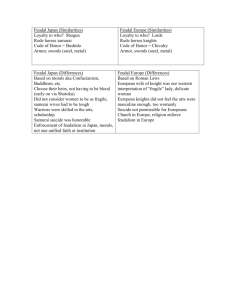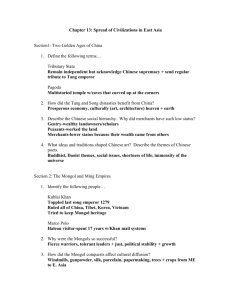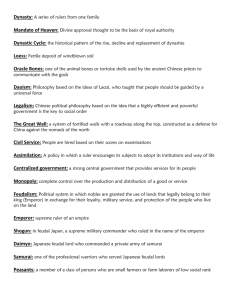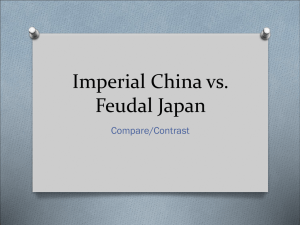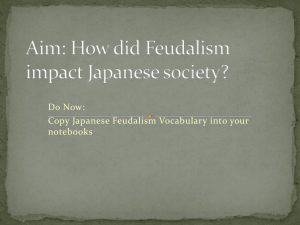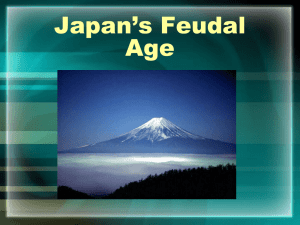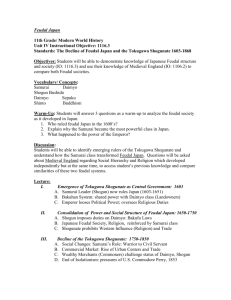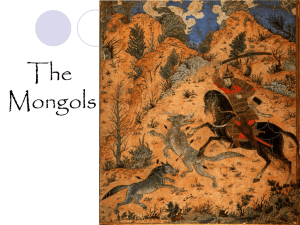Chapter 13- Guided Reading and Review
advertisement
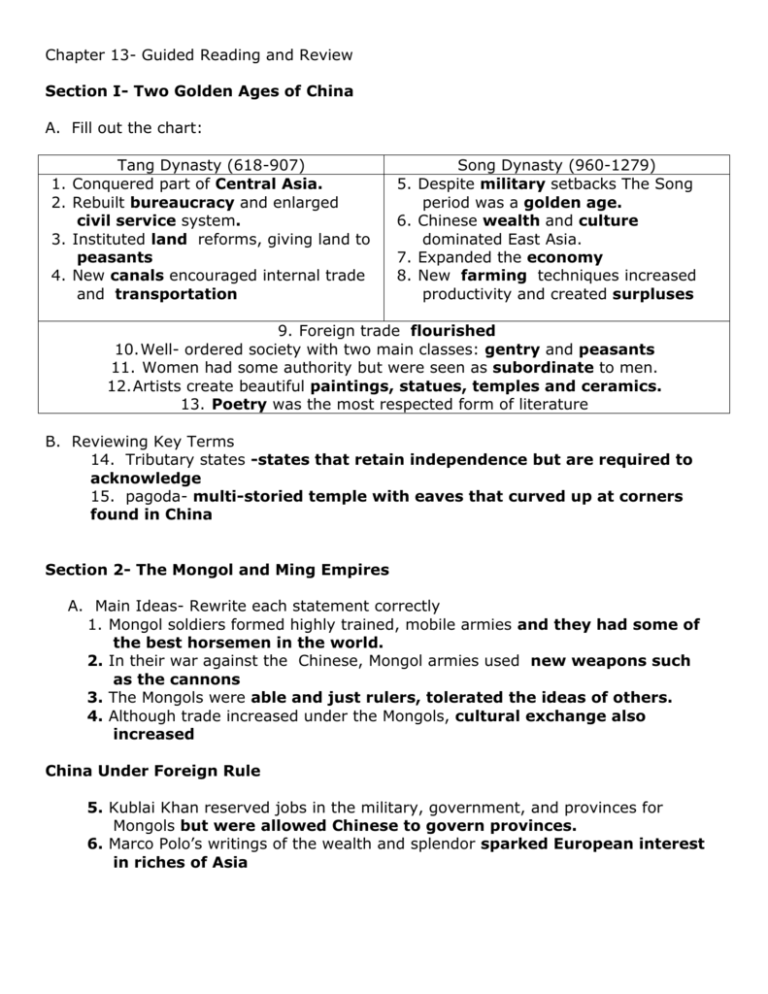
Chapter 13- Guided Reading and Review Section I- Two Golden Ages of China A. Fill out the chart: 1. 2. 3. 4. Tang Dynasty (618-907) Conquered part of Central Asia. Rebuilt bureaucracy and enlarged civil service system. Instituted land reforms, giving land to peasants New canals encouraged internal trade and transportation 5. 6. 7. 8. Song Dynasty (960-1279) Despite military setbacks The Song period was a golden age. Chinese wealth and culture dominated East Asia. Expanded the economy New farming techniques increased productivity and created surpluses 9. Foreign trade flourished 10. Well- ordered society with two main classes: gentry and peasants 11. Women had some authority but were seen as subordinate to men. 12. Artists create beautiful paintings, statues, temples and ceramics. 13. Poetry was the most respected form of literature B. Reviewing Key Terms 14. Tributary states -states that retain independence but are required to acknowledge 15. pagoda- multi-storied temple with eaves that curved up at corners found in China Section 2- The Mongol and Ming Empires A. Main Ideas- Rewrite each statement correctly 1. Mongol soldiers formed highly trained, mobile armies and they had some of the best horsemen in the world. 2. In their war against the Chinese, Mongol armies used new weapons such as the cannons 3. The Mongols were able and just rulers, tolerated the ideas of others. 4. Although trade increased under the Mongols, cultural exchange also increased China Under Foreign Rule 5. Kublai Khan reserved jobs in the military, government, and provinces for Mongols but were allowed Chinese to govern provinces. 6. Marco Polo’s writings of the wealth and splendor sparked European interest in riches of Asia The Ming Restore Chinese Rule 7. Under the Ming, farmers production was able to support the huge Chinese Population 8. After years of Mongol domination, Chinese art and literature flourished under the Ming dynasty. China and the World 9. Zheng He traveler abroad in order to promote trade and collect tribute. 10. Chinese exploration ended abruptly in 1433, less than 60 years before Columbus’s westward voyages B. Reviewing Key People 11. _B_ Mongol Leader who toppled the last Song Emperor (Kublai Khan) 12. __C__ Italian merchant who lived in China for a time (Marco Polo) 13. __A__ Chinese admiral who led seven expeditions to promote trade and collect tribute (Zheng He) Section 4- The Emergence of Japan 1. 2. 3. 4. 5. 6. 7. 8. Mountains- Four fifths of Japan is covered with these Ring of Fire- This region is subject to frequent earthquakes and volcanoes Korea- This country formed a cultural bridge between Japan and China Heian- During the years from 794 to 1185, this city was home to a sophisticated elegant culture. Surrounding seas have both protected and isolated Japan Yamato- This clan dominated Japan from A.D. 500 to 1500. Unlike in China, in Japan, officials were chosen on the basis of inherited status Chinese –Women of the Heian court were forbidden to learn this. B. Reviewing Key Terms 9. archipelago-chain of islands 10. kami- nature spirits worshipped by members of the Shinto religion 11.kana-phonetic symbols representing syllables that the Japanese incorporated into their system of writing Section 5- Japan’s Feudal Age Main Idea Main Idea: Japanese feudal society was headed by a shogun who distributed lands to daimyo. The daimyo then gave land to the samurai, who lived by the code of bushido. 1. The position of women declined during the age of the samurai 2. Although the Mongols attempted to invade Japan during the feudal age, they failed twice due to typhoons that destroyed their fleet. Main Idea: The Tokugawa shogunate ruled Japan from 1603-1868 3. To end feudal warfare, the Tokugawa shoguns kept the outward forms of feudal society, but imposed central government control over the whole countruy 4. Economy grew dramatically during the Tokugawa shogunate Main Idea: During the feudal age, a Buddhist sect from China, known as Zen, won widespread acceptance among samurai. 5. Zen included many contradictory traditions 6. Zen beliefs shaped Japanese culture in many ways. Main Idea: The Japanese feudal saw a blossoming of creativity in the arts and theater 7. No drama and kabuki, rather a new form of drama was based on No plays 8. Many important works of literature were written and a new form of poetry called haiku was created. Reviewing Key Terms 9. __f__ Supreme military commander (Shogun) 10. __b__ Vassal lords (daimyo) 11. __e__ The fighting aristocracy (samurai) 12. __a__ Samurai code of values (bushido) 13. __d__ New form of drama based on No plays (kabuki) 14. __c__ New type of poetry with only three lines (haiku) Geography Quiz A. Location 1. 2. 3. 4. 5. __G__ Huang He River __C__ Yangzi River __D__ Yalu River __A__ Japan __B__Sea of Japan 6. __E__ Korea, a cultural bridge linking China and Japan 7. __F__ The Song capital of Hangzhou 8. __H__ Beijing (Cambulac) Kublai Khan’s capital
